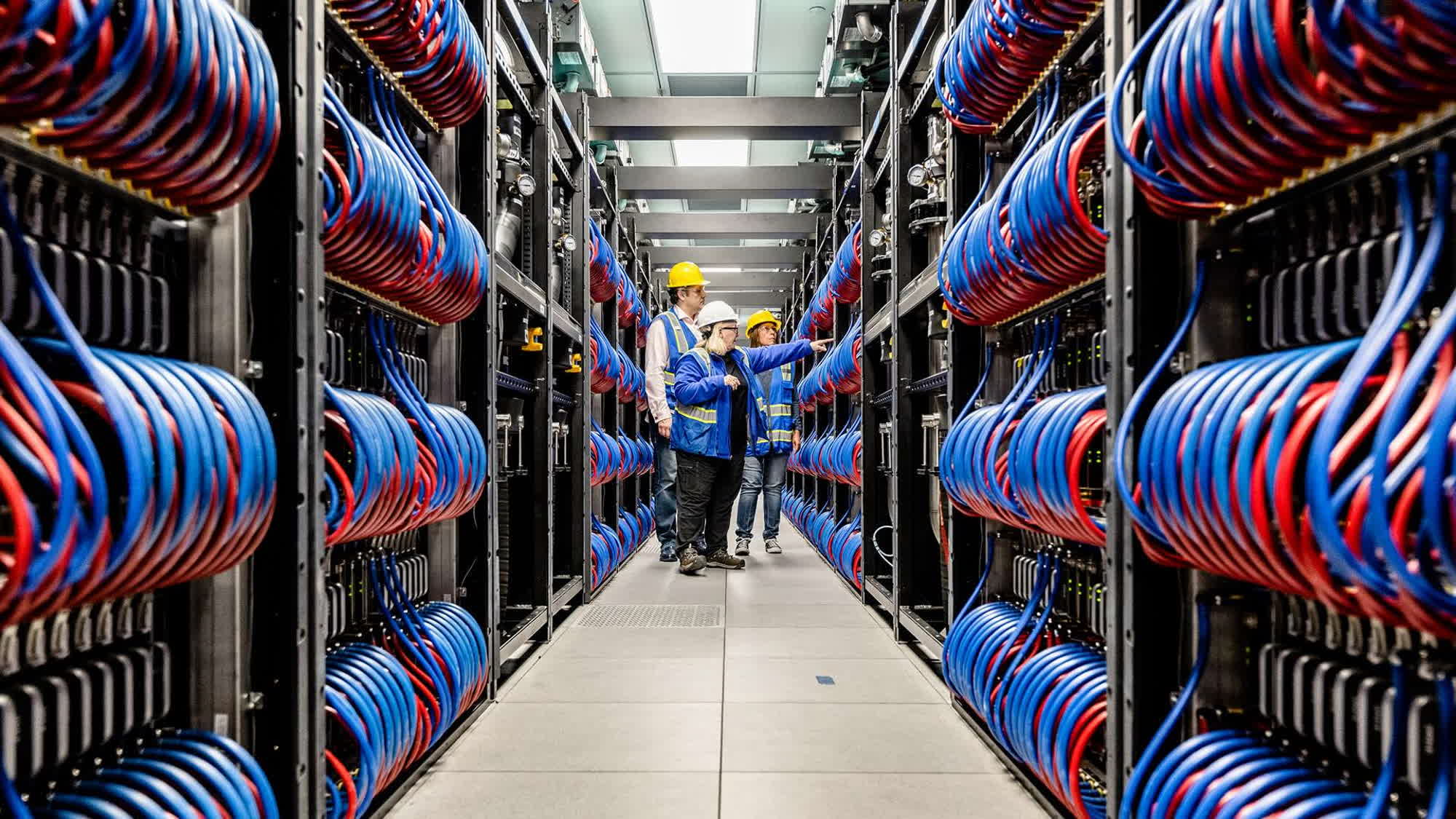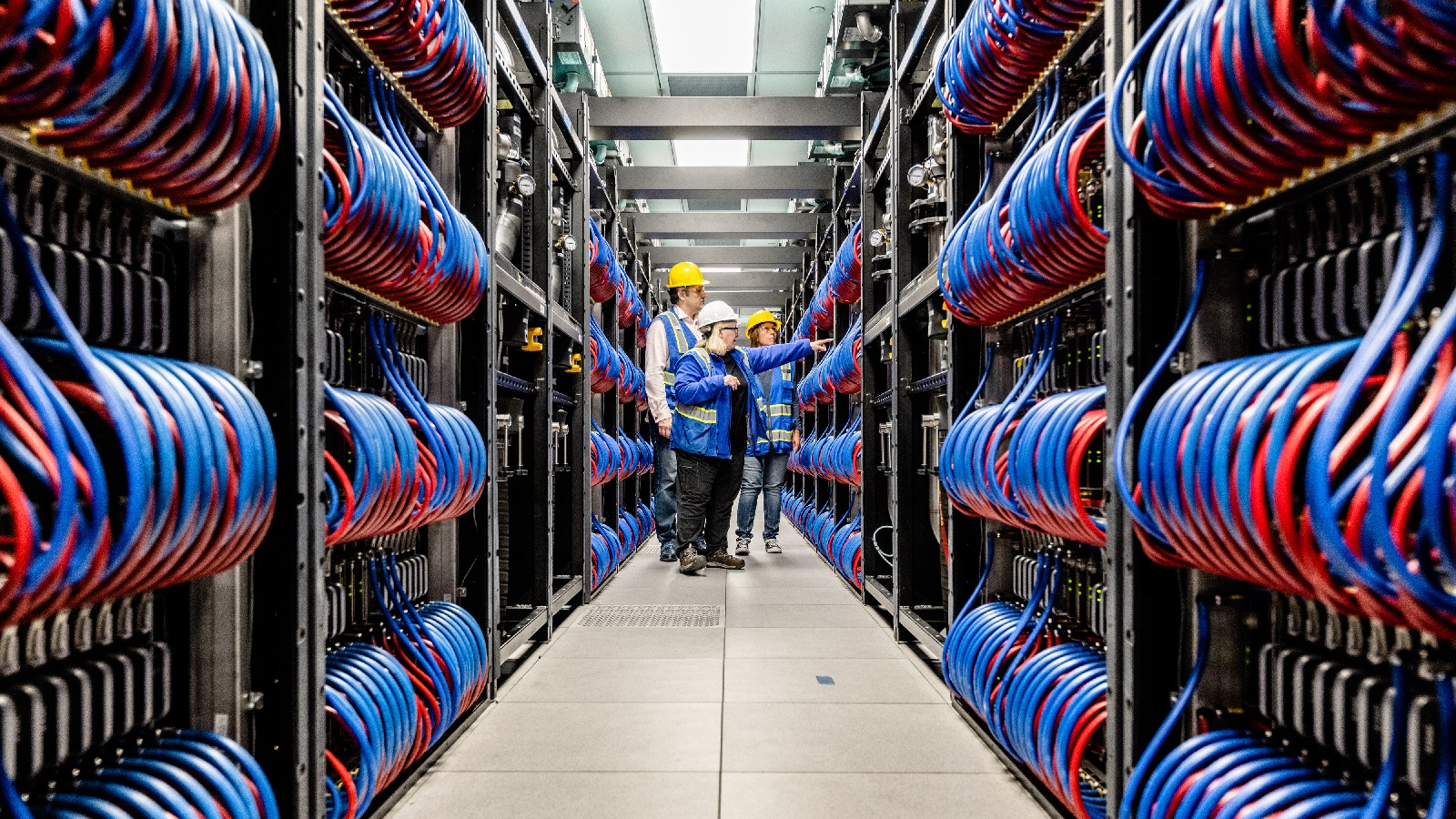The collaboration between Intel, Argonne National Laboratory, and HPE has yielded results as showcased by the Aurora supercomputer’s achievement. Breaking the exascale barrier and emerging as the fastest AI supercomputer to date.

Also Read: Microsoft Set to Launch Mobile Game Store in July
Since its inception the Aurora project has been propelled by the collective expertise of industry leaders fueled by the ambition to push the boundaries of high-performance computing (HPC) and artificial intelligence (AI).
Deployed at the Argonne National Laboratory and through the collaborative efforts of Intel and HPE. With the unveiling of Aurora’s performance metrics, the world witnessed a shift in computational capabilities.
Surpassing the exascale threshold with a compute prowess of 1.012 exaflops, Aurora firmly establishes itself as the pinnacle of AI supercomputing. Its AI-specific performance reaches 10.6 AI exaflops.
Comprising 166 racks housing 10,624 blades, Aurora harnesses the power of 21,248 Intel Xeon CPU Max chips (4th Gen Sapphire Rapids) and 63,744 Intel Data Center GPU Max series units (Ponte Vecchio).
The utilization of HPE’s slingshot fabric for interconnect ensures communication across its vast network of 84,992 endpoints.
Garnering second place in the HPL LINPACK benchmark, Aurora’s achievement of 1.012 exaflops with just 87% of its total node capacity shows its efficiency.
Its third-place ranking in the HPCG test, achieving 5612 TFLOPs/second with only 39% utilization. It is propelled by Intel’s Xe core architecture and AI hardware blocks.
Also Read: AlphaFold 3: Drug Discovery AI Model Unveiled by Google DeepMind and Isomorphic Labs
Emerging as the leader in AI performance charts, Aurora’s 10.6 AI exaflops has a new era of computational innovation. Leveraging the LINPACK-mixed precision (HPL-MxP) benchmark.
Intel’s Aurora supercomputer falls, failing to dethrone AMD-powered Frontier on the coveted Top500 list. Despite its hardware specifications and promises of performance, Aurora struggles to overcome a litany of challenges ranging from hardware failures to cooling malfunctions.
Aurora was poised to seize the top spot from AMD’s Frontier, the champion on the Top500 list. With an array of 21,248 CPUs and 63,744 GPUs, Aurora has the potential to redefine the boundaries of computational performance.
Aurora’s performance falls short on the Top500 list, securing second place behind Frontier. The inability to submit a full Linpack run underlines the operational challenges plaguing the system.
While Aurora managed to break the Exaflop barrier with 87% of its nodes active, it remains overshadowed by Frontier’s superior performance.
Intel has touted Aurora’s theoretical peak performance of 2 exaflops, yet real-world benchmarks reveal a stark contrast. With only 51% of its peak performance realized in sustained workloads, Aurora lags behind Frontier’s efficiency.
Also Read: Nintendo to Reveal Switch Successor by March 2025




















